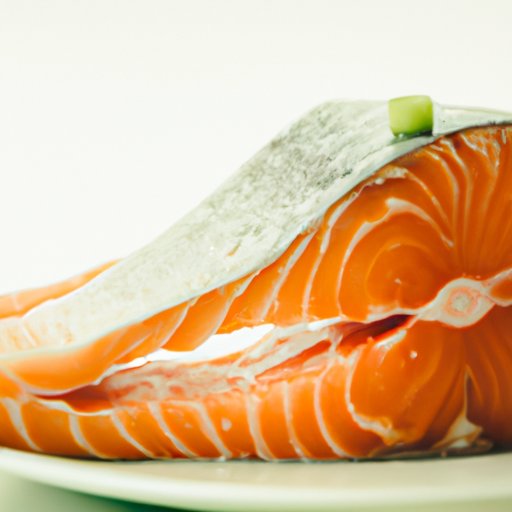
Introduction
Salmon is often touted as a superfood due to its abundant nutritional benefits. However, despite its popularity, many people are unsure of how often they can safely incorporate salmon into their diet and in what quantity. This article aims to provide comprehensive information on the nutritional benefits, risks, and sustainability of frequent salmon consumption, along with healthy recipe ideas and cooking tips.
Facts & Figures
Salmon is an excellent source of protein, vitamins, and minerals, making it an indispensable part of a balanced diet. In fact, the American Heart Association recommends consuming fish, such as salmon, at least twice a week to maintain good health. Salmon is also rich in omega-3 fatty acids, which have been shown to boost heart health, reduce inflammation, and support brain function.
The nutritional value of salmon varies depending on the species, size, and preparation method. Wild salmon is generally considered more nutritious than farmed salmon due to its higher levels of omega-3 fatty acids and lower levels of contaminants such as PCBs and dioxins. However, many farmed salmon options are now being raised in more sustainable and eco-friendly ways, making them a healthier and more sustainable option than they once were.
The frequency of salmon consumption recommended varies depending on various factors, such as age, health status, and life stage. Pregnant and breastfeeding women are recommended to eat more salmon due to its high omega-3 content, which is crucial for fetal and infant brain development. However, due to salmon’s potential mercury content, children and women of reproductive age may need to limit their intake to reduce their risk of mercury exposure.
Recipes & Recommendations
One of the great things about salmon is that it is delicious and versatile, making it easy to incorporate into a variety of dishes. Grilled salmon with roasted vegetables and brown rice, salmon poke bowls, and salmon Caesar salad are just a few tasty options. To complement salmon, try pairing it with sides such as roasted broccoli, sautéed spinach, or grilled asparagus. For beverages, a crisp white wine or iced tea can be the perfect complement to a salmon dish.
Sustainability & Sourcing
The environmental impact of salmon consumption is a concern for many people. Overfishing, water pollution, and habitat destruction are all issues that have a significant impact on wild salmon populations. However, there are also many sustainable options available, such as choosing salmon that is certified by the Marine Stewardship Council or farmed in closed-loop systems. These options minimize salmon’s impact on the environment and are more sustainable for the long term.
Health Benefits & Risks
Salmon’s high omega-3 content is one of its most significant health benefits. Omega-3 has been shown to have anti-inflammatory properties that can help reduce the risk of cardiovascular disease, stroke, and other chronic illnesses. In addition, salmon’s protein content can help with weight loss and muscle building.
However, salmon can also have potential risks associated with it. Due to its position as a top predator in the food chain, salmon may contain high levels of mercury and other toxins, which can be harmful to human health. Eating more than two servings of salmon per week can increase the risk of exposure to these harmful substances.
Cooking Techniques & Tips
Salmon can be prepared using a variety of cooking methods, including baking, grilling, and poaching. Whichever method you choose, it is important to keep the cooking time and temperature in mind to preserve the nutritional benefits of salmon. Aim for an internal temperature of 145°F and a cooking time of about 12 minutes for a 1-inch thick fillet. For baked salmon, try adding fresh herbs and lemon to enhance its flavor. If grilling, brush the salmon with olive oil and sprinkle it with salt and herbs for the perfect seasonings.
Conclusion
Salmon is a delicious and nutritious food that can be enjoyed in moderation as part of a healthy and sustainable diet. While there are some risks associated with salmon consumption, such as exposure to mercury and other toxins, choosing sustainably sourced salmon and following recommended serving sizes can help minimize these risks. In conclusion, salmon is a tasty and nutrient-dense food that is well worth incorporating into any diet.




